Abstract
1. During a 2 min period of submersion of normal ducks, sciatic artery blood flow fell to 10 ± 1·5% control and carotid artery blood flow was reduced to 71 ± 7% control. Mean arterial blood pressure (M.A.P.), however, was maintained at 83 ± 3·5% of control. The whole animal showed a constrictor response during submersion, with the sciatic vascular bed showing average constriction. Both resistance to flow and yield pressure increased in the sciatic bed but changed little in the carotid bed. After 1 min submersion Pa,O2 was 52 ± 1 mm Hg.
2. Upon emersion, as soon as ventilation commenced, the whole animal showed a dilator response. The carotid bed exhibited marked vasodilatation whereas the sciatic bed returned to its control level.
3. After α-receptor blockade, ducks were submerged for 1 min. During this time M.A.P. fell to 64 ± 5·6% of control and heart rate was reduced to 49 ± 8·3% of control. Blood flow through the sciatic and carotid arteries also fell to values of 41 ± 6·9% of control and 91 ± 13% of control respectively. There was little change in either resistance to flow or yield pressure in the sciatic bed compared to normal ducks, and the carotid bed showed reductions in resistance to flow and yield pressure during submersion. Pa,O2 after 1 min under water was 41 ± 1·1 mm Hg.
4. β-receptor blockade had no effect on any of the measured variables during submersion. Upon surfacing, however, although the whole animal response was one of dilatation, the carotid bed was less dilated than in normal ducks at this time and the sciatic bed was more constricted.
5. Injection of atropine not only abolished the bradycardia during submersion but also caused a rise in M.A.P. and sciatic blood flow during the period under water. After 1 min submersion Pa,O2 was 30 ± 1·2 mm Hg.
6. It is concluded that stimulation of adrenergic α-receptors is responsible for the increase in resistance to flow through the sciatic artery and the maintenance of blood pressure during submersion in the normal animals. This selective constrictor activity and the resulting ischaemia is important in the maintenance of Pa,O2 during submersion. Adrenergic β-receptors (cardiac and/or peripheral) are involved, to a small extent, in the blood pressure and blood flow changes that occur when ventilation commences upon emersion.
Full text
PDF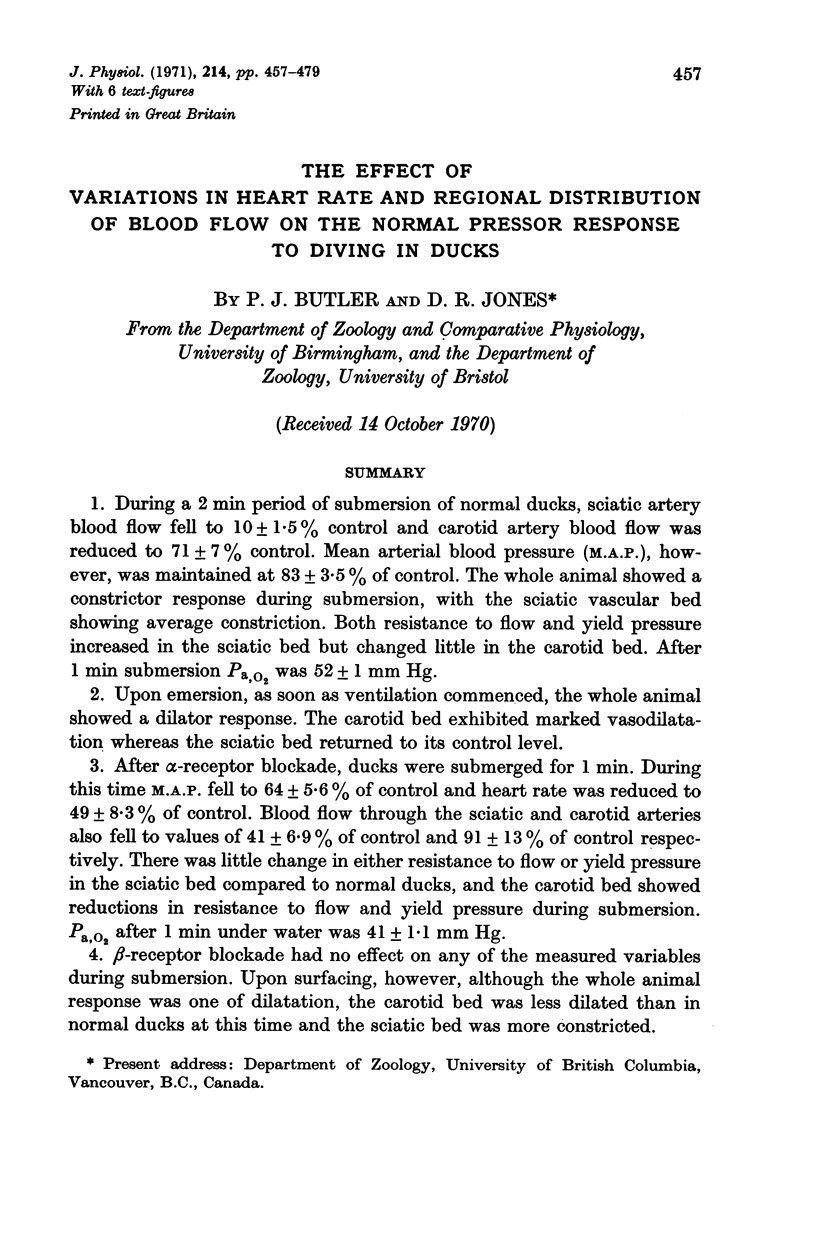
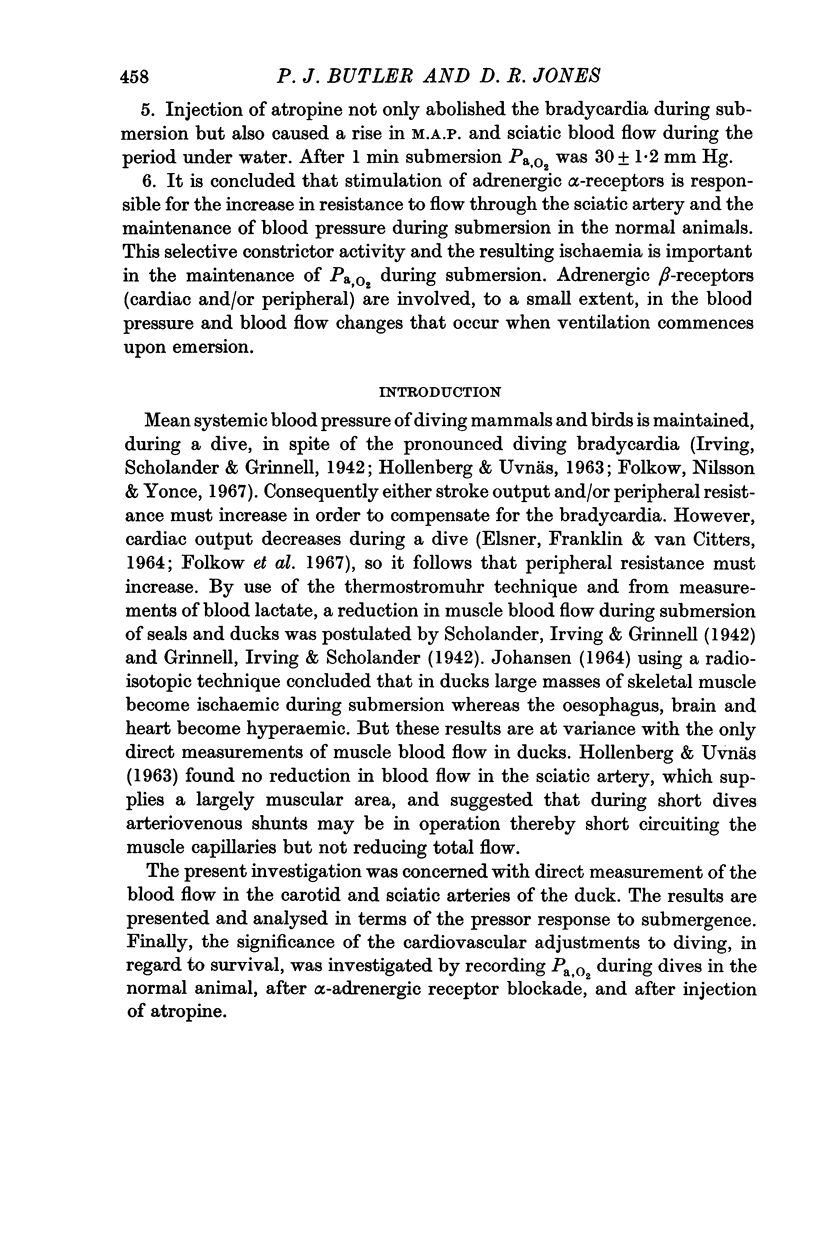
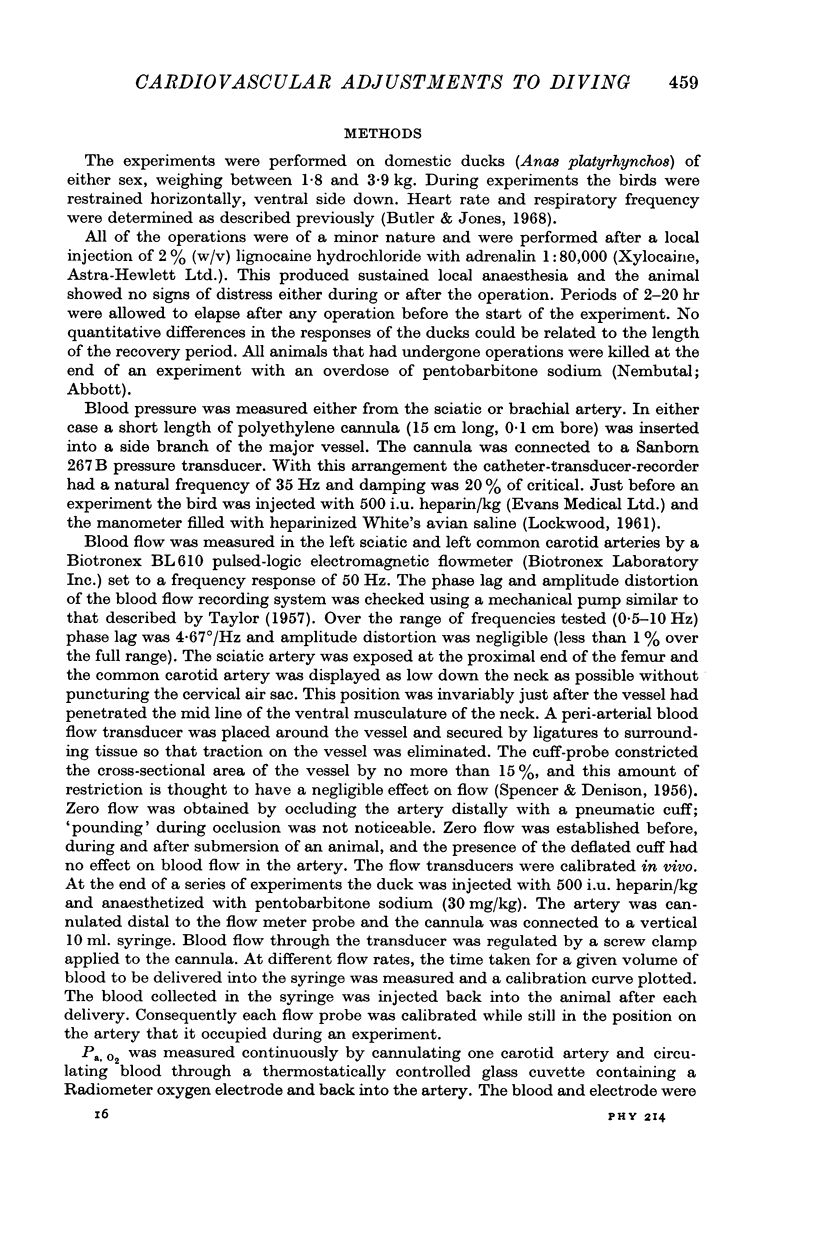
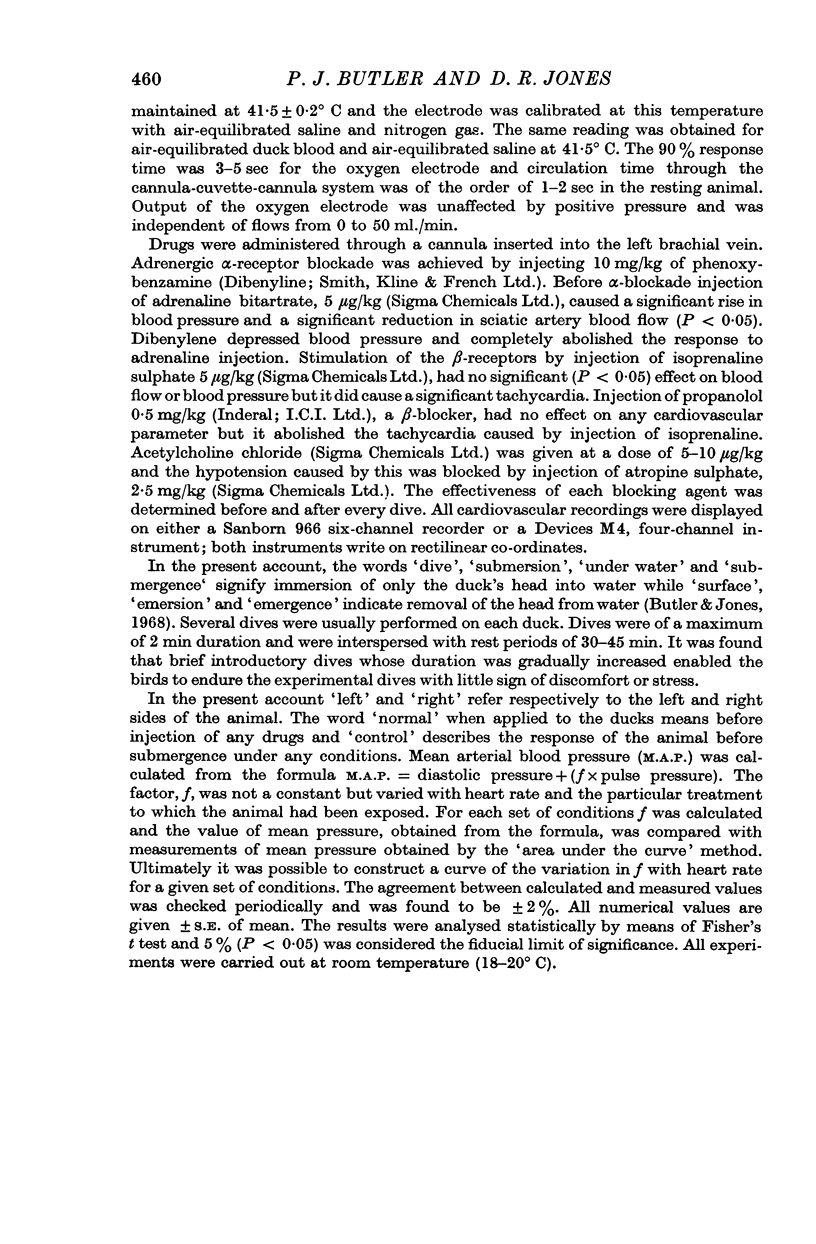
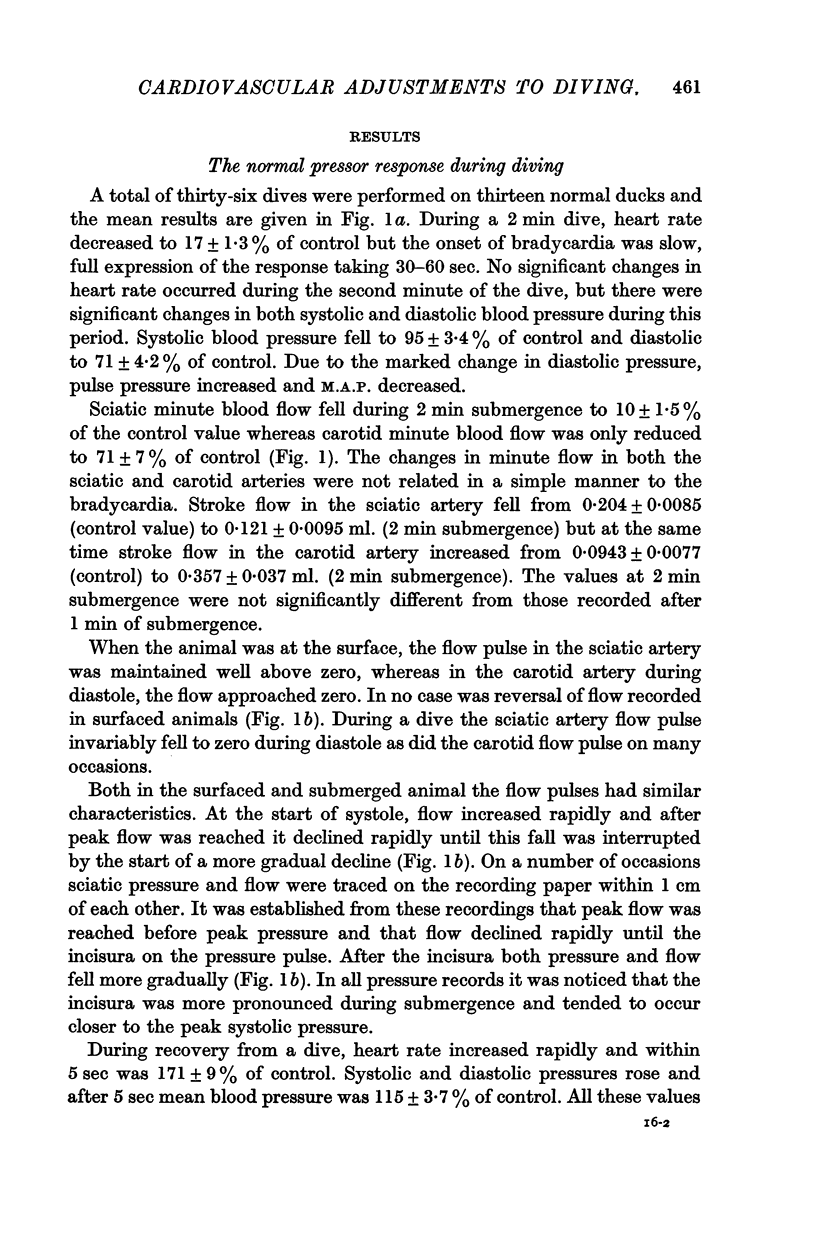
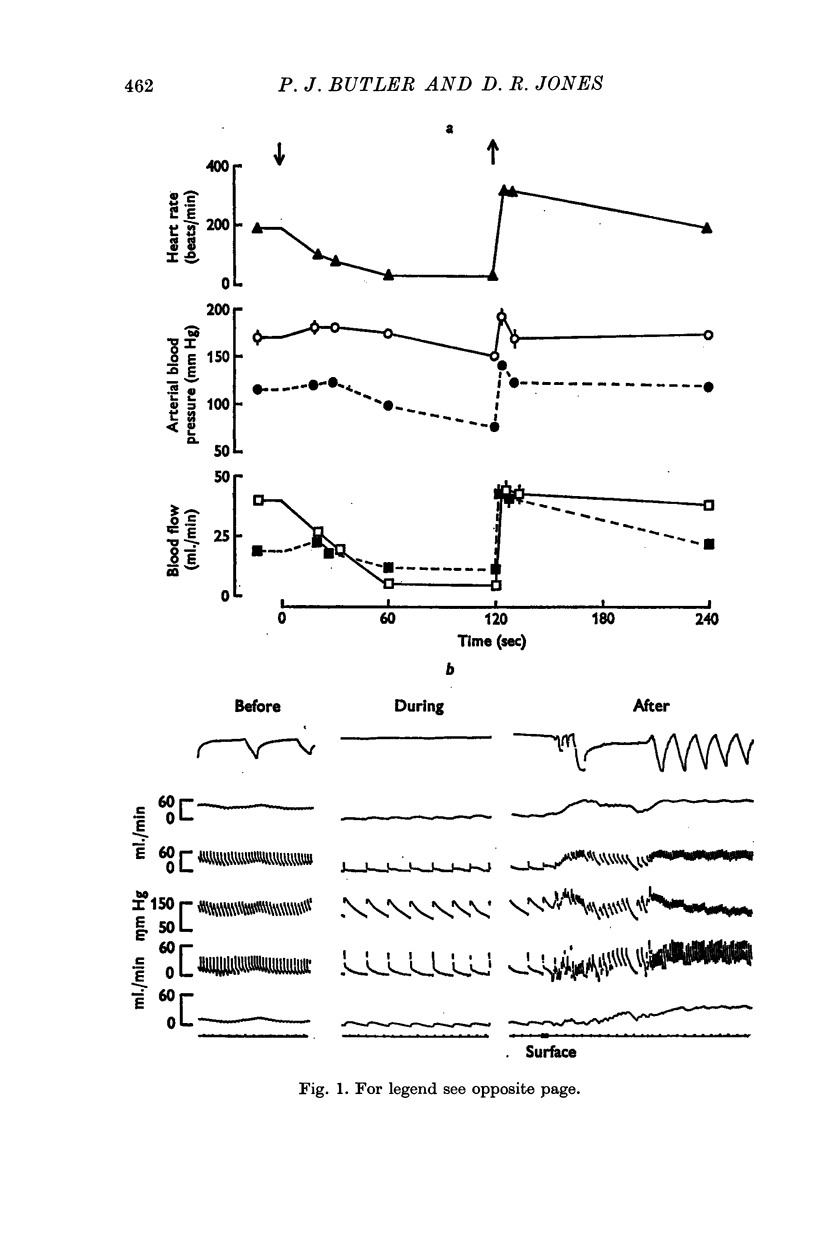

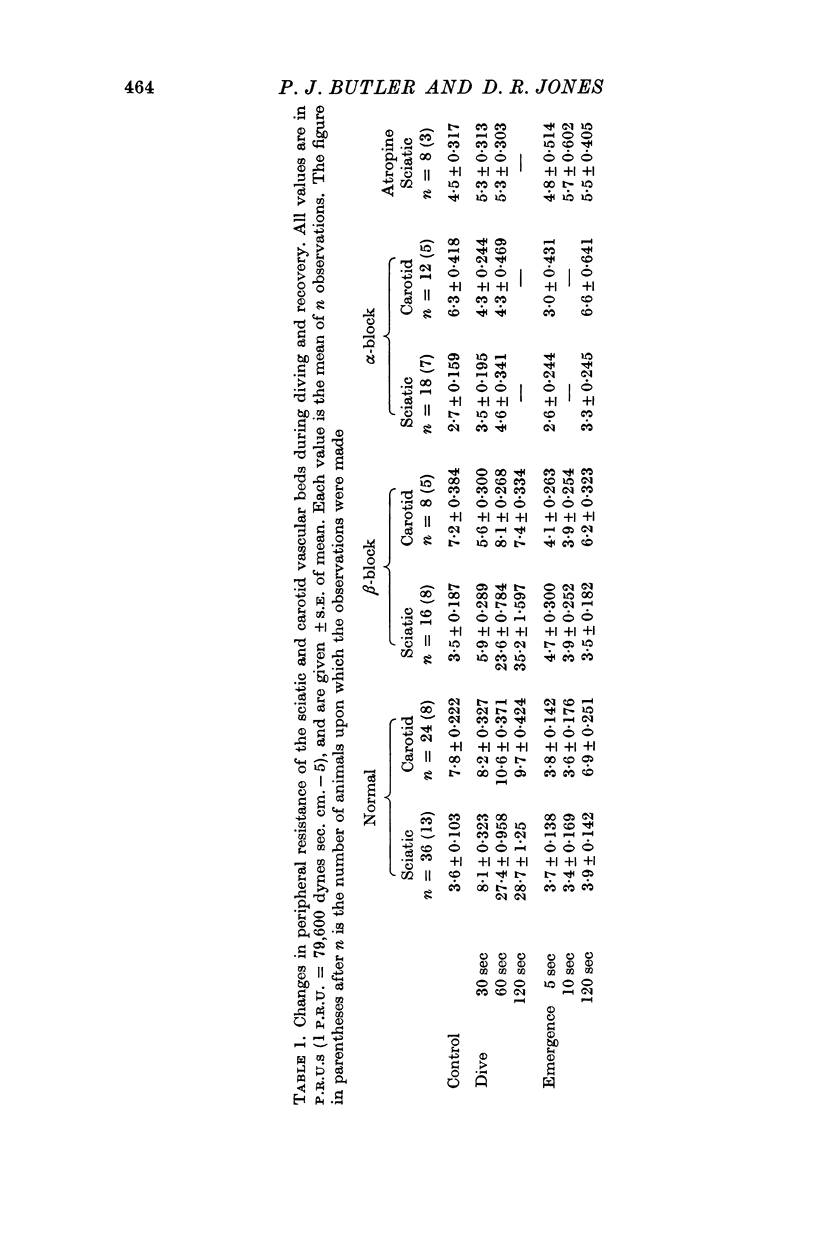
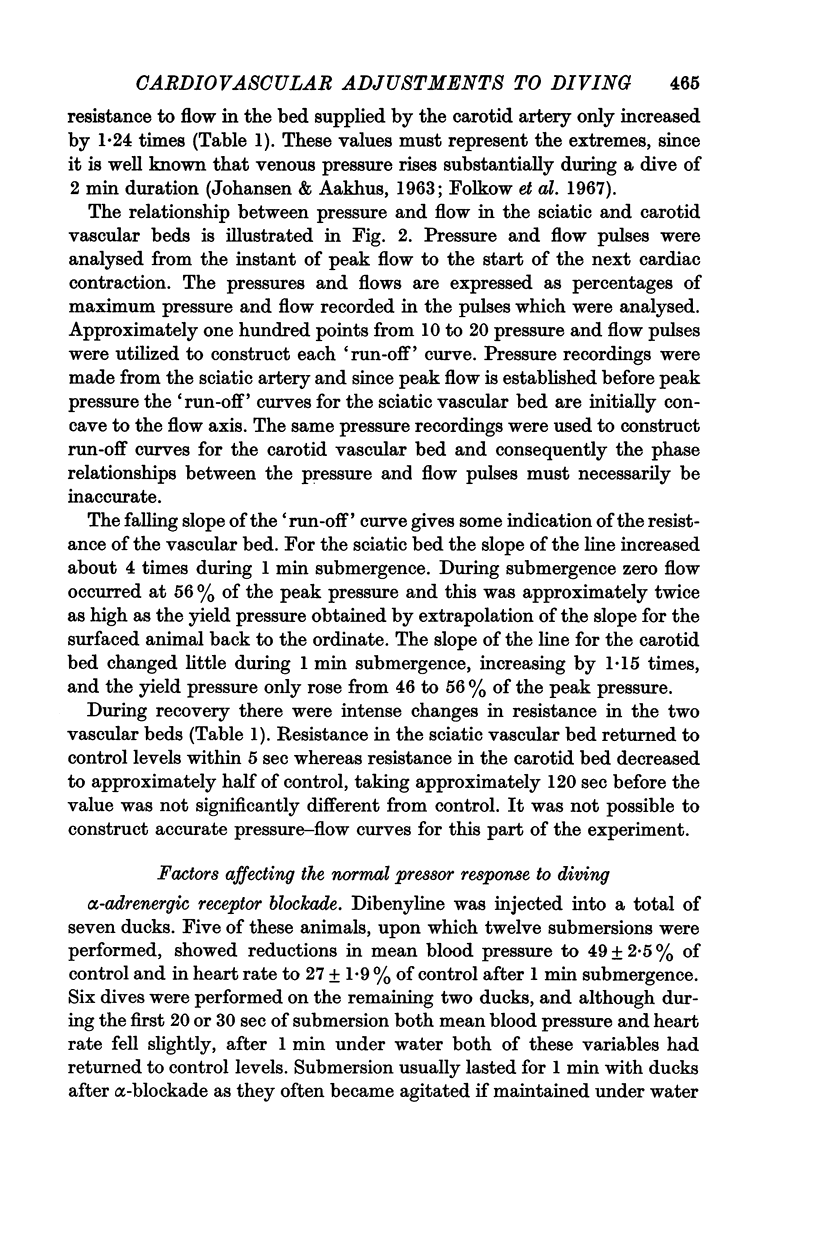
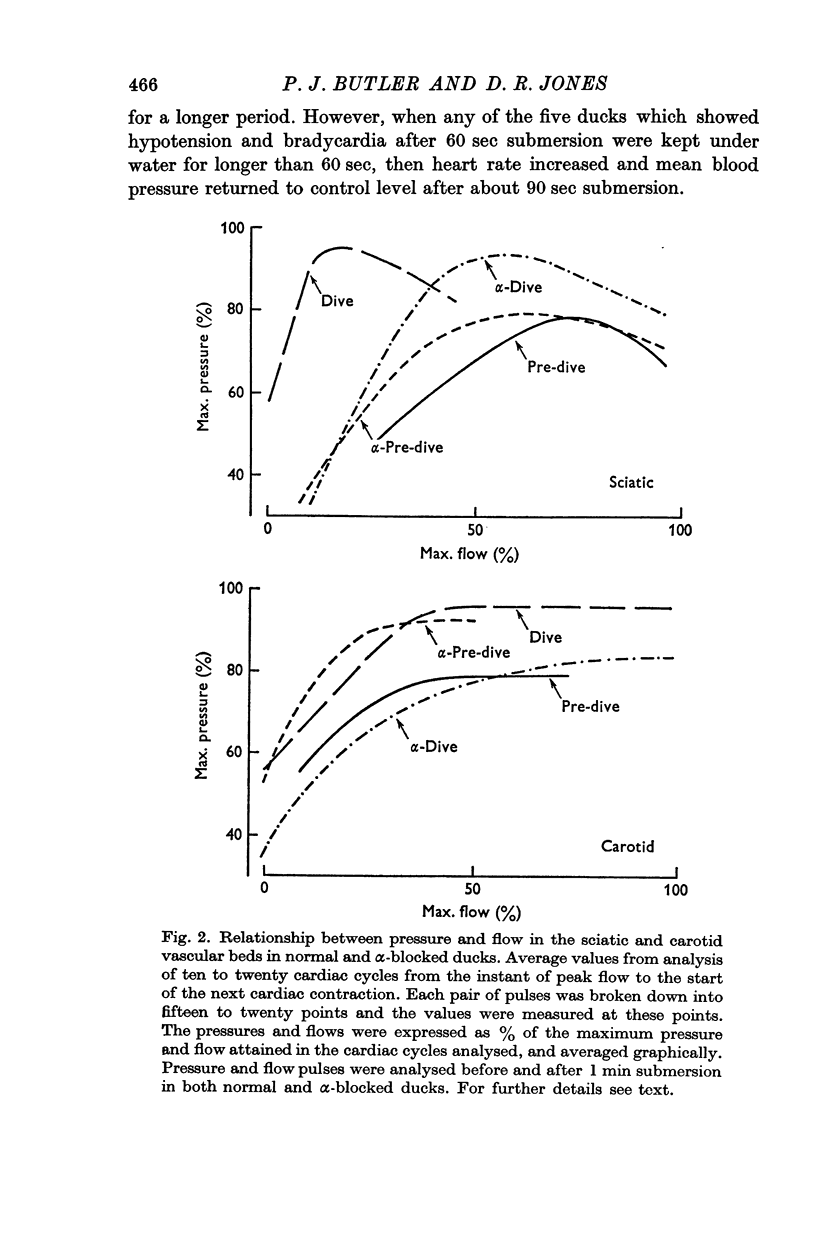
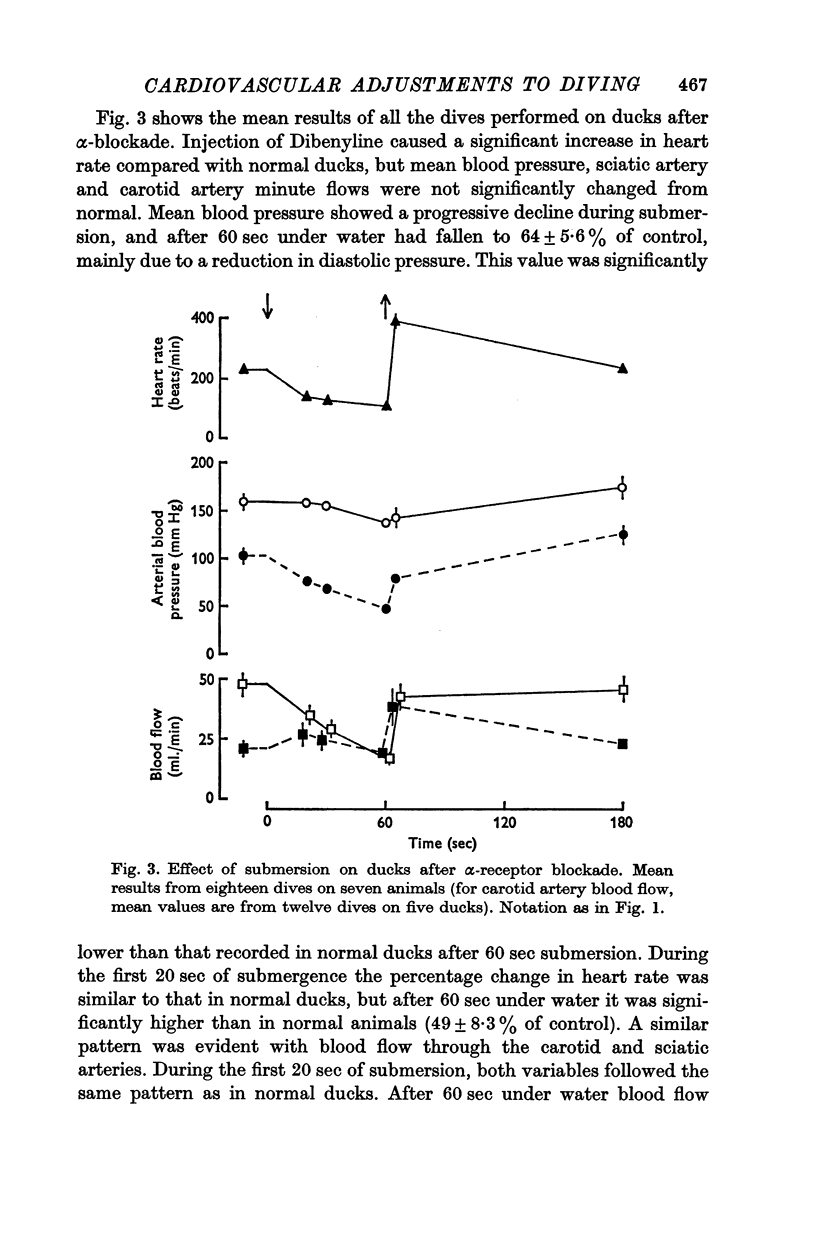
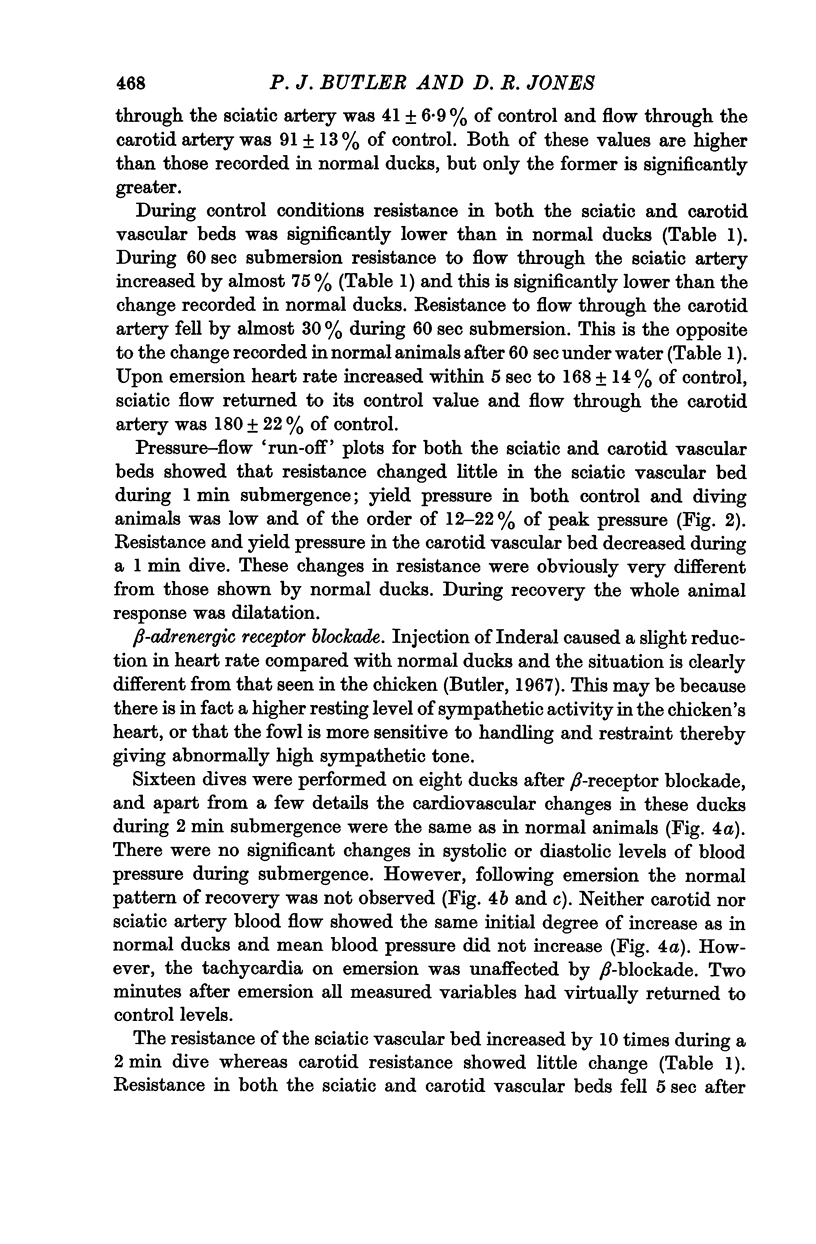
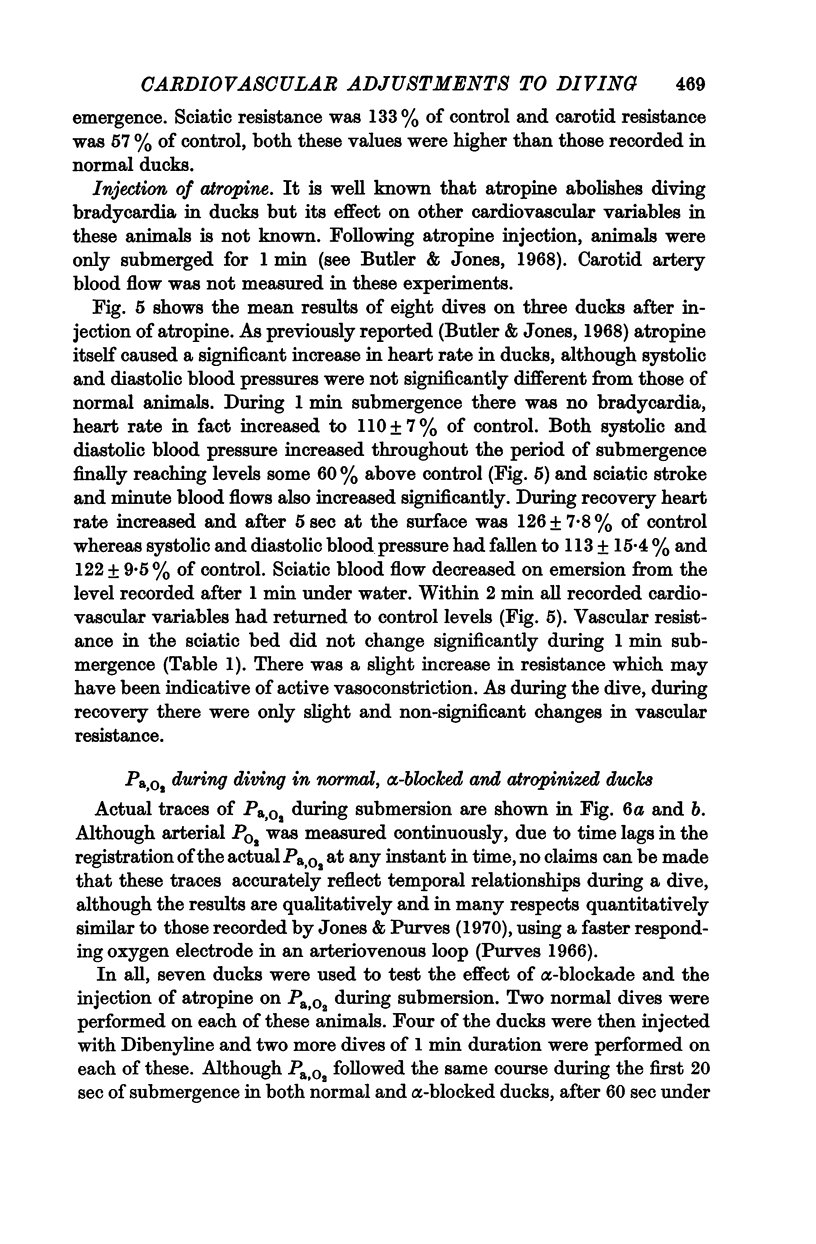
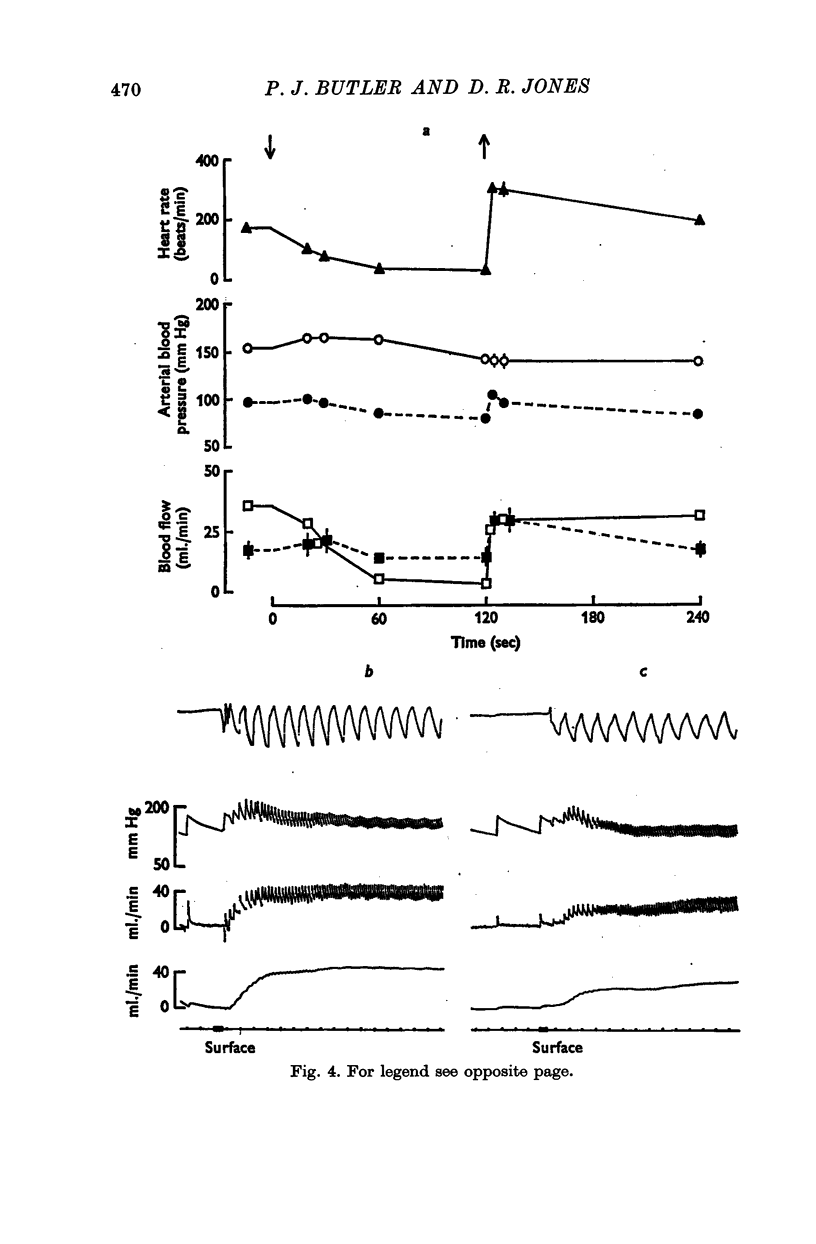
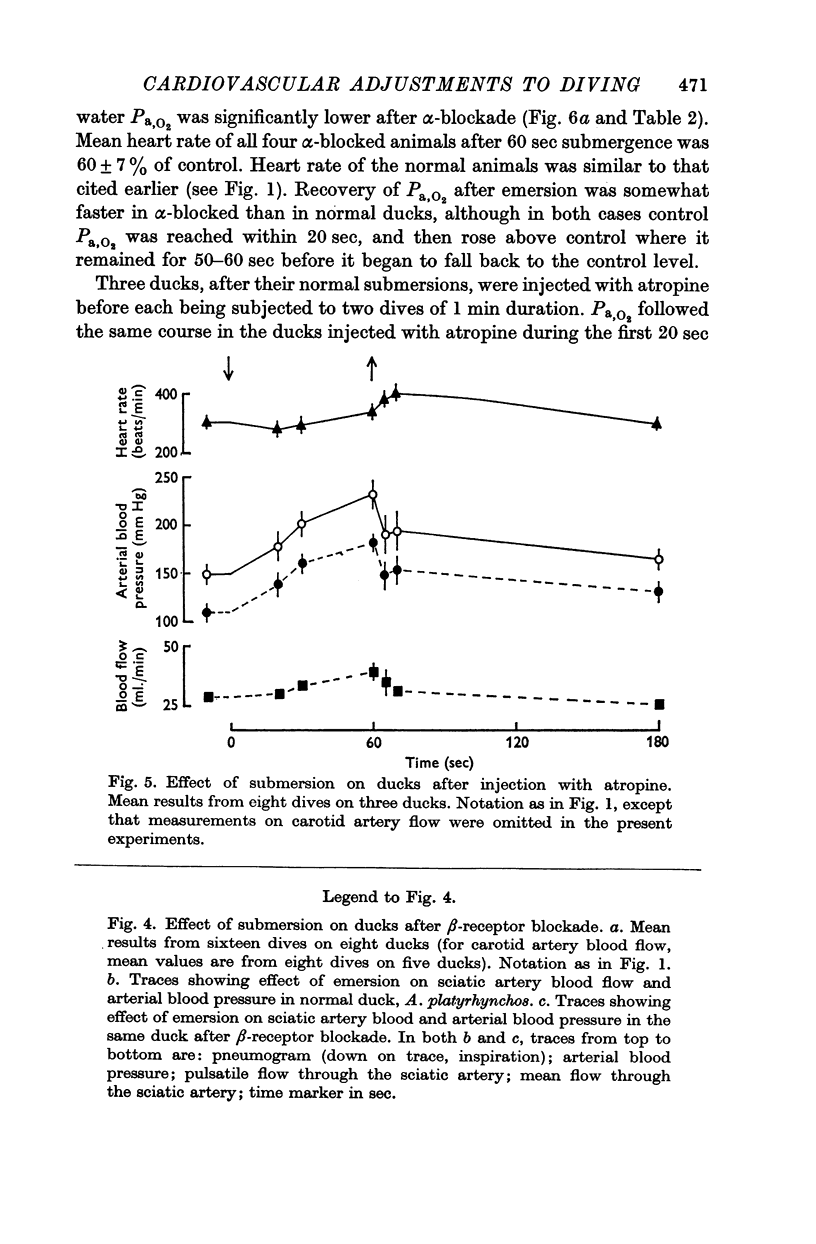
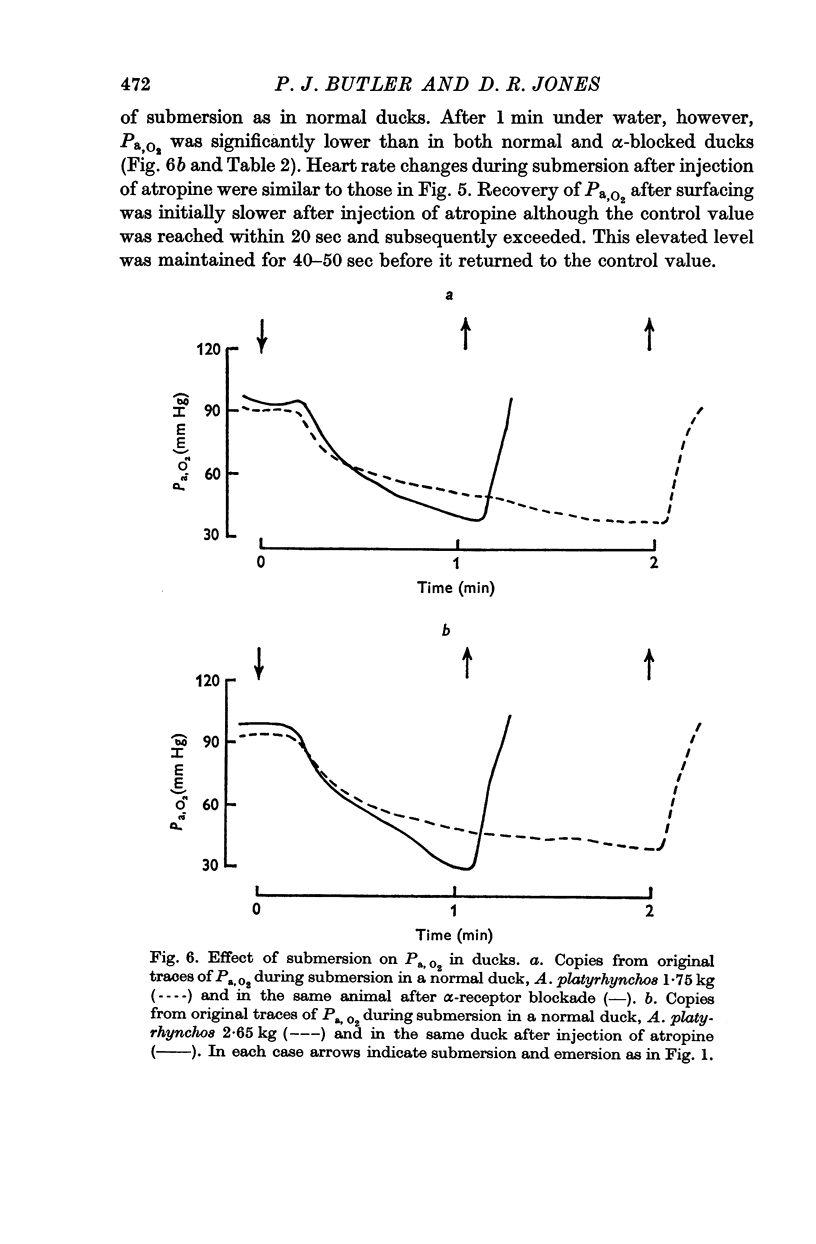
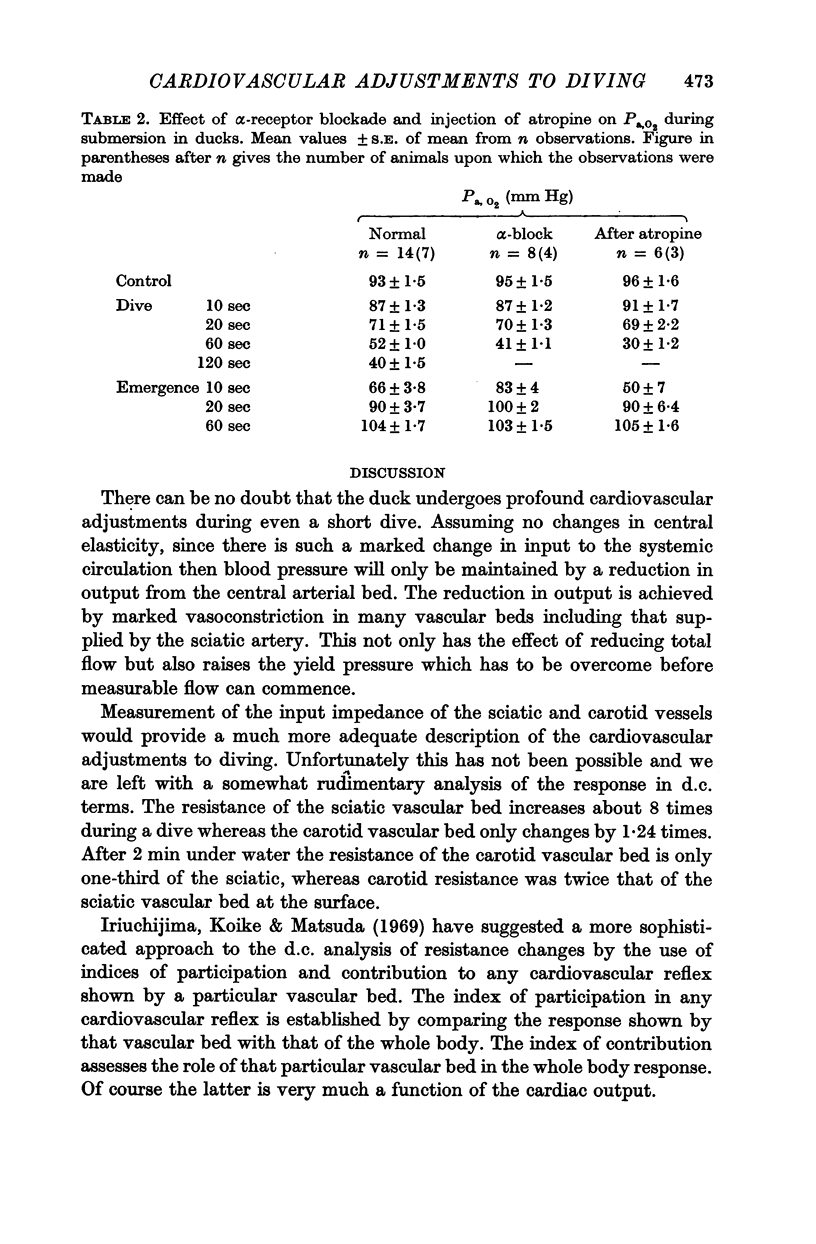
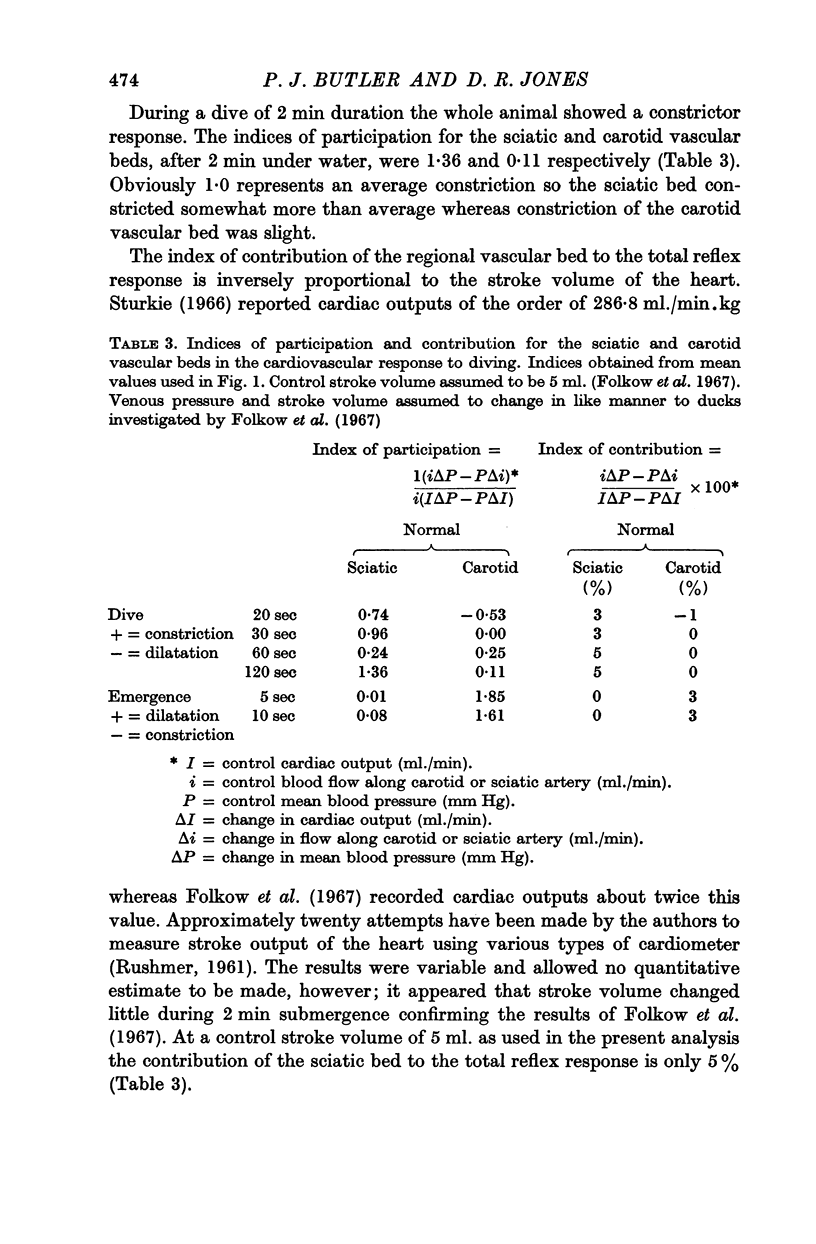
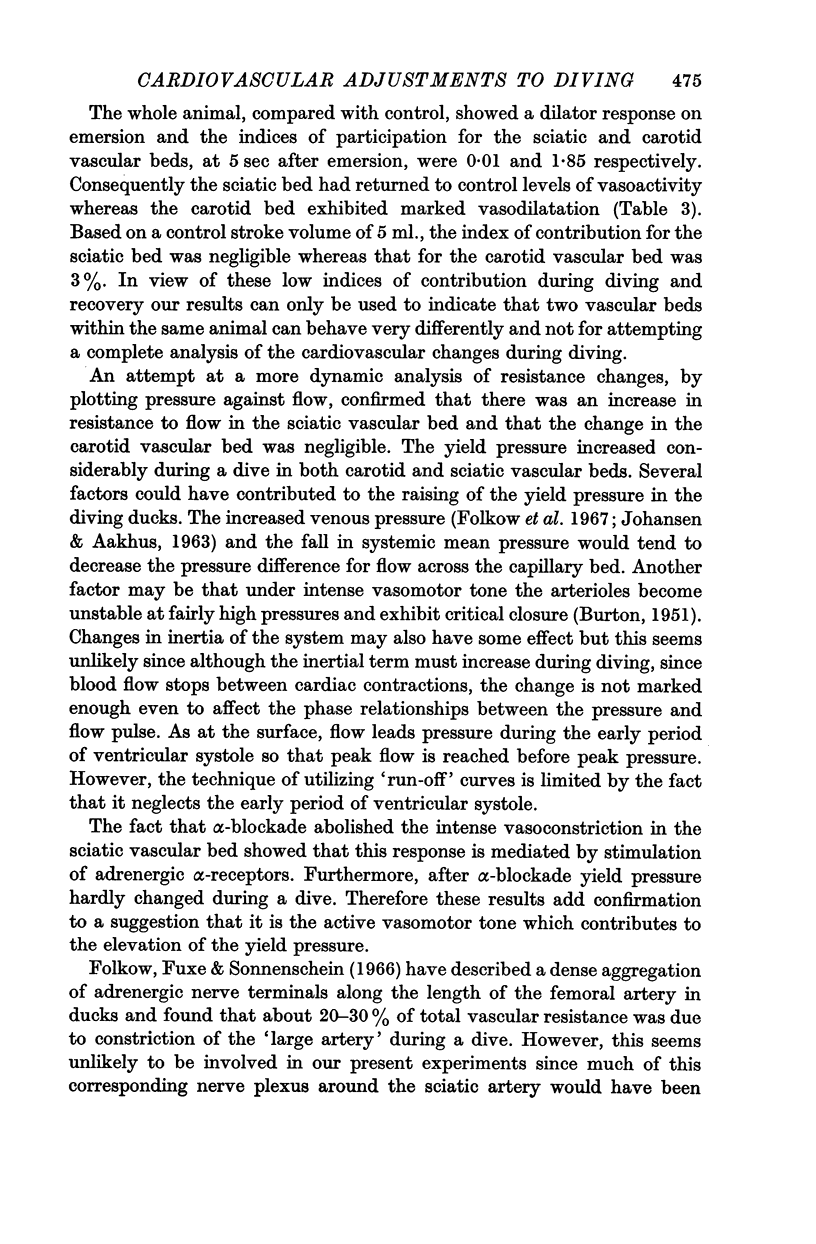
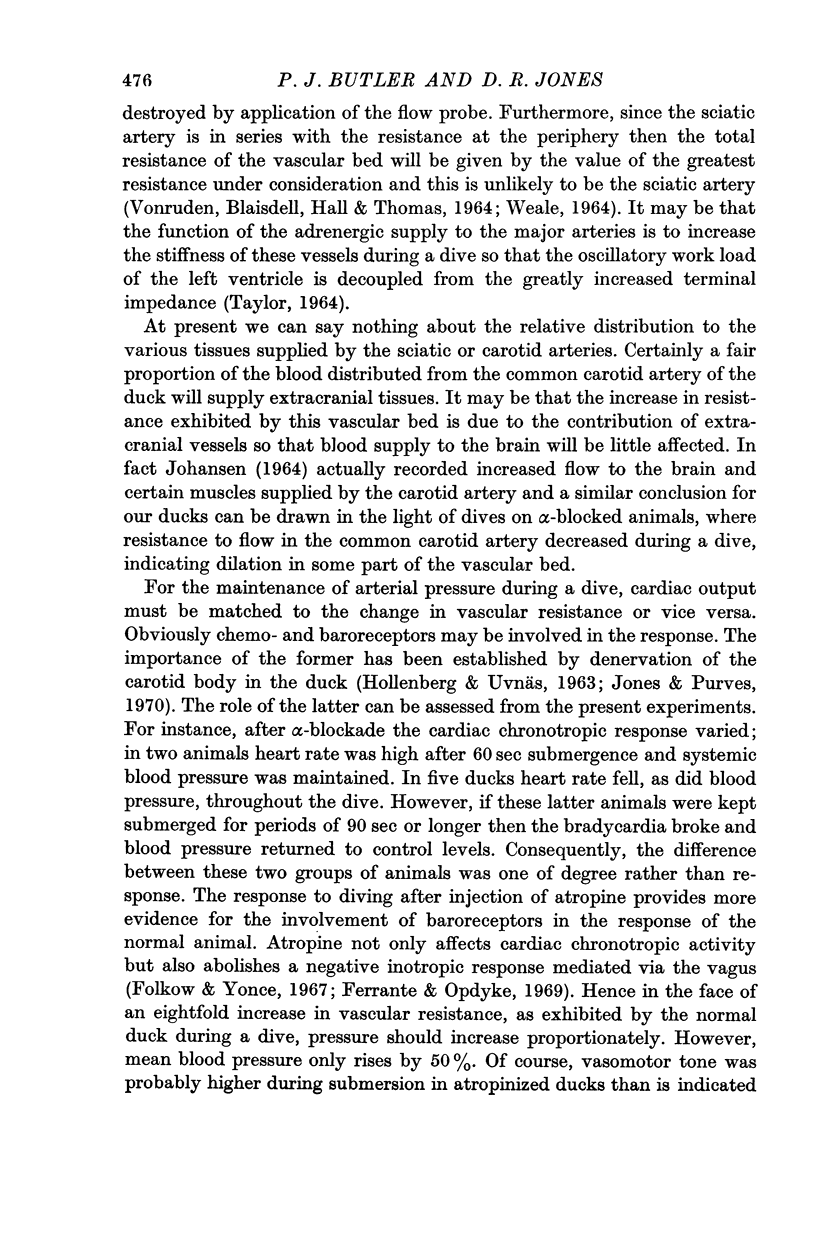
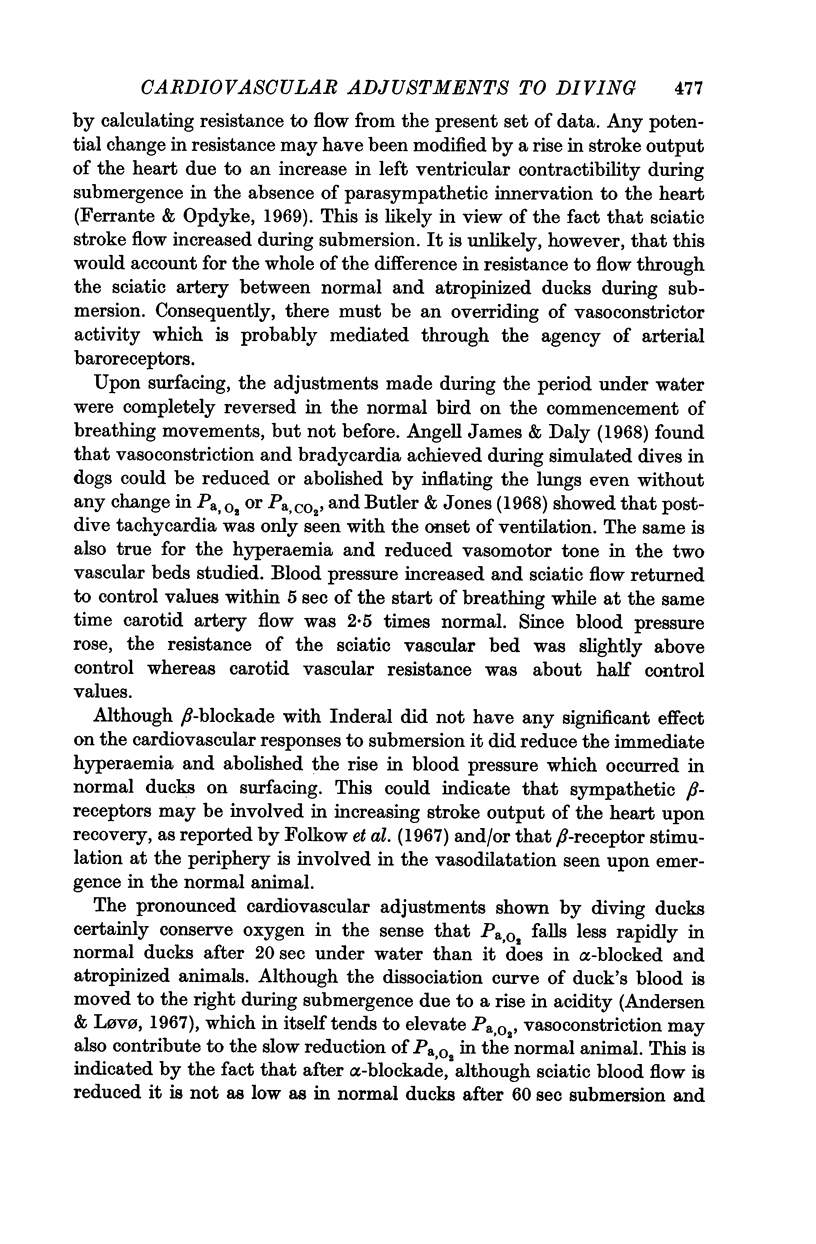
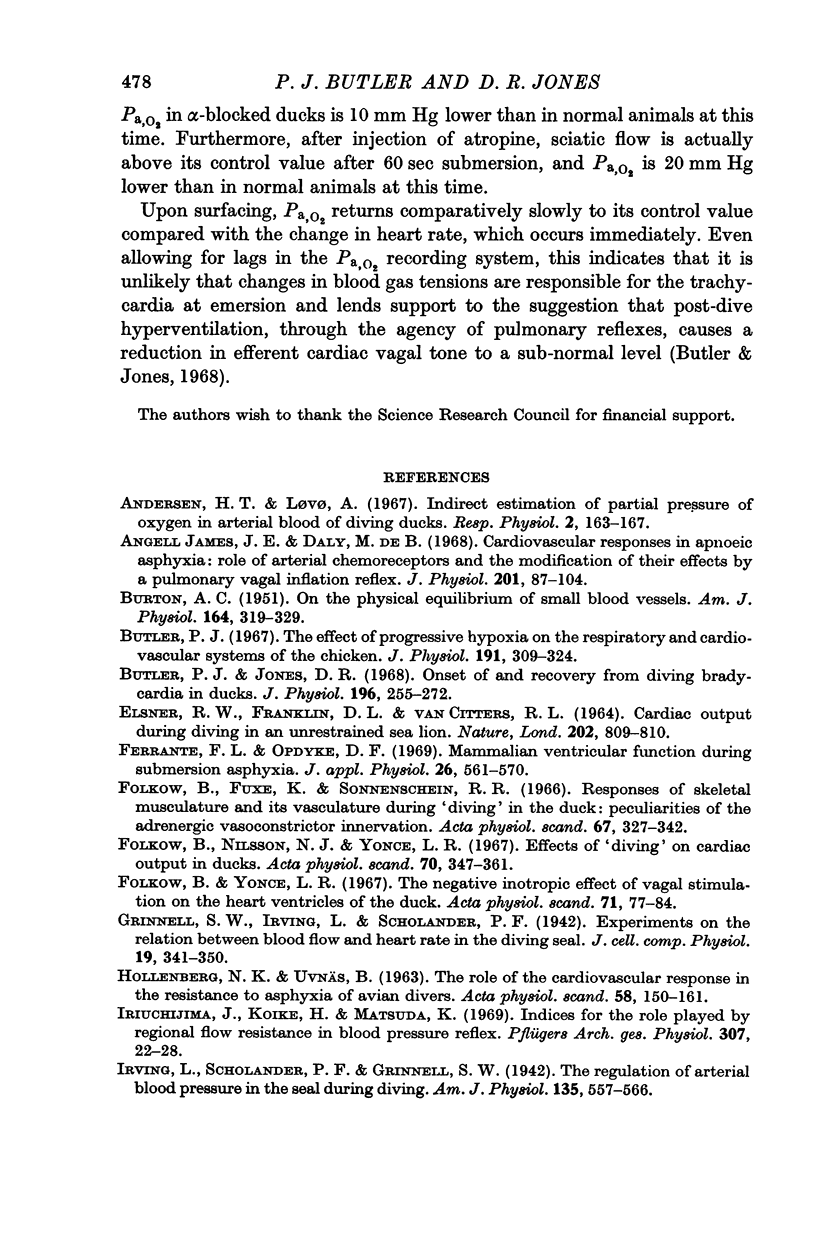
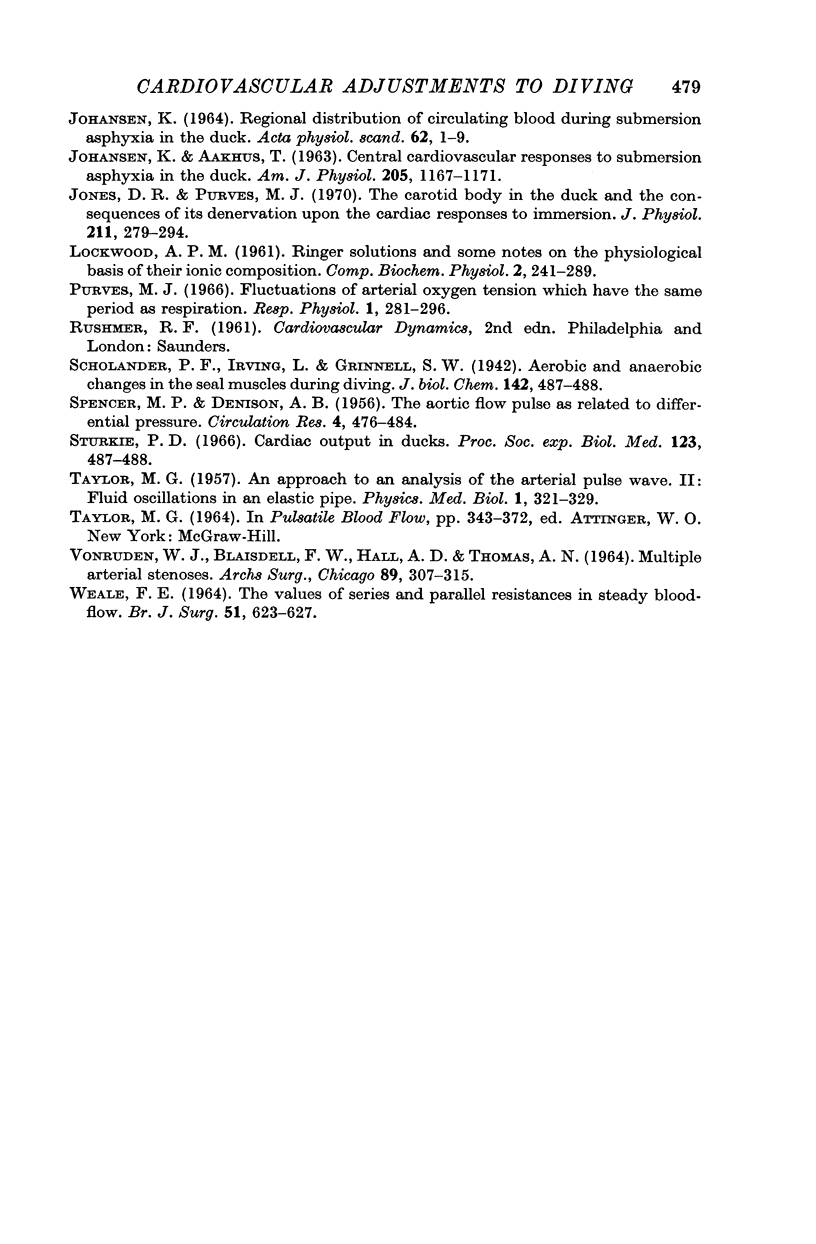
Selected References
These references are in PubMed. This may not be the complete list of references from this article.
- BURTON A. C. On the physical equilibrium of small blood vessels. Am J Physiol. 1951 Feb;164(2):319–329. doi: 10.1152/ajplegacy.1951.164.2.319. [DOI] [PubMed] [Google Scholar]
- Butler P. J. Effect of progressive hypoxia on the respiratory & cardiovascular system of chickens. J Physiol. 1967 Jul;191(2):309–324. doi: 10.1113/jphysiol.1967.sp008252. [DOI] [PMC free article] [PubMed] [Google Scholar]
- Butler P. J., Jones D. R. Onset of and recovery from diving bradycardia in ducks. J Physiol. 1968 May;196(2):255–272. doi: 10.1113/jphysiol.1968.sp008505. [DOI] [PMC free article] [PubMed] [Google Scholar]
- ELSNER R. W., FRANKLIN D. L., VANCITTERS R. L. CARDIAC OUTPUT DURING DIVING IN AN UNRESTRAINED SEA LION. Nature. 1964 May 23;202:809–810. doi: 10.1038/202809a0. [DOI] [PubMed] [Google Scholar]
- Ferrante F. L., Opdyke D. F. Mammalian ventricular function during submersion asphyxia. J Appl Physiol. 1969 May;26(5):561–570. doi: 10.1152/jappl.1969.26.5.561. [DOI] [PubMed] [Google Scholar]
- Folkow B., Nilsson N. J., Yonce L. R. Effects of "diving" on cardiac output in ducks. Acta Physiol Scand. 1967 Jul-Aug;70(3):347–361. doi: 10.1111/j.1748-1716.1967.tb03634.x. [DOI] [PubMed] [Google Scholar]
- Folkow B., Yonce L. R. The negative inotropic effect of vagal stimulation on the heart ventricles of the duck. Acta Physiol Scand. 1967 Sep;71(1):77–84. doi: 10.1111/j.1748-1716.1967.tb03711.x. [DOI] [PubMed] [Google Scholar]
- HOLLENBERG N. K., UVNAS B. The role of the cardiovascular response in the resistance to asphyxia of avian divers. Acta Physiol Scand. 1963 Jun-Jul;58:150–161. doi: 10.1111/j.1748-1716.1963.tb02637.x. [DOI] [PubMed] [Google Scholar]
- Iriuchijima J., Koike H., Matsuda K. Indices for the role played by regional flow resistance in blood pressure reflex. Pflugers Arch. 1969;307(1):22–28. doi: 10.1007/BF00589456. [DOI] [PubMed] [Google Scholar]
- JOHANSEN K., AAKHUS T. CENTRAL CARDIOVASCULAR RESPONSES TO SUBMERSION ASPHYXIA IN THE DUCK. Am J Physiol. 1963 Dec;205:1167–1171. doi: 10.1152/ajplegacy.1963.205.6.1167. [DOI] [PubMed] [Google Scholar]
- James J. E., Daly M. de B. Cardiovascular responses in apnoeic asphyxia: role of arterial chemoreceptors and the modification of their effects by a pulmonary vagal inflation reflex. J Physiol. 1969 Mar;201(1):87–104. doi: 10.1113/jphysiol.1969.sp008744. [DOI] [PMC free article] [PubMed] [Google Scholar]
- Jones D. R., Purves M. J. The carotid body in the duck and the consequences of its denervation upon the cardiac responses to immersion. J Physiol. 1970 Dec;211(2):279–294. doi: 10.1113/jphysiol.1970.sp009279. [DOI] [PMC free article] [PubMed] [Google Scholar]
- LOCKWOOD A. P. 'Ringer" solutions and some notes on the physiological basis of their ionic composition. Comp Biochem Physiol. 1961 Apr;2:241–289. doi: 10.1016/0010-406x(61)90113-x. [DOI] [PubMed] [Google Scholar]
- SPENCER M. P., DENISON A. B. The aortic flow pulse as related to differential pressure. Circ Res. 1956 Jul;4(4):476–484. doi: 10.1161/01.res.4.4.476. [DOI] [PubMed] [Google Scholar]
- Sturkie P. D. Cardiac output in ducks. Proc Soc Exp Biol Med. 1966 Nov;123(2):487–488. doi: 10.3181/00379727-123-31521. [DOI] [PubMed] [Google Scholar]
- TAYLOR M. G. An approach to an analysis of the arterial pulse wave. II. Fluid oscillations in an elastic pipe. Phys Med Biol. 1957 Apr;1(4):321–329. doi: 10.1088/0031-9155/1/4/302. [DOI] [PubMed] [Google Scholar]
- VONRUDEN W. J., BLAISDELL F. W., HALL A. D., THOMAS A. N. MULTIPLE ARTERIAL STENOSES: EFFECT ON BLOOD FLOW; AN EXPERIMENTAL STUDY. Arch Surg. 1964 Aug;89:307–315. doi: 10.1001/archsurg.1964.01320020071011. [DOI] [PubMed] [Google Scholar]
- WEALE F. E. THE VALUES OF SERIES AND PARALLEL RESISTANCES IN STEADY BLOOD-FLOW. Br J Surg. 1964 Aug;51:623–627. doi: 10.1002/bjs.1800510818. [DOI] [PubMed] [Google Scholar]


